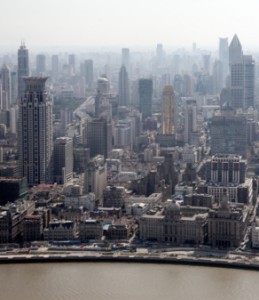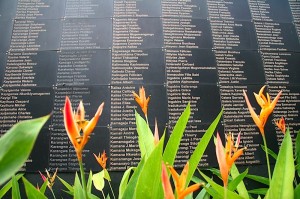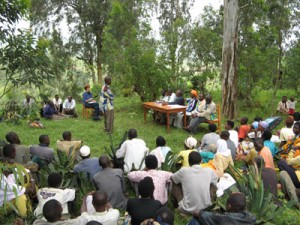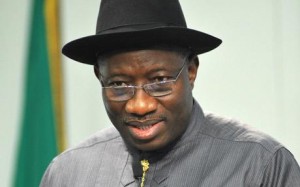
Much has been said about the Asian “miracle”. Countries like South Korea and Taiwan had between the fifties and the sixties levels of development similar to those of Ghana and Nigeria, and the following decades the Asian “Dragons” and the “Tigers” initiate a forced march to catch up with the developed world economically. A number of analysts welcomed the “enlightened dictatorship” of Asian leaders like Lee Kwan Yew (Singapore) or Park Chung Hee (South Korea) as the decisive factor of the catching-up process. By contrast, Africa was plagued by malicious or obscurantist dictators (Bokassa, Mobutu, Idi Amin Dada, Robert Mugabe, and the list goes on) who have led the continent to its bankruptcy. Is development a question of leadership after all? This theory that is still being defended by many supporters is simplistic in many respects. It reduces politics, which is the conduct of affairs in complex societies, to a matter of individuals, ethics and good intentions…
The essay of the economist Joe Studwell, « How Asia works » should then be welcomed in more ways than one. The author gives an explanation to the success of North-eastern Asia (Japon, South Korea, China, Taiwan) and the relative failure of South Asia (Thailand, Malaysia, Indonesia, Philippines) through three policies which are, in his view, pivotal in the development process of a Nation.
According to Joe Studwell the structural transformation of North-eastern Asia economies is the result of a recipe made of three ingredients: free the agricultural potential of a country by the redistribution of lands in order to set a rural capitalist agriculture, reinforced by an affirmative development of support services (access to inputs and loans, efficient storage and distribution infrastructures); upgrade without delay the industrial value chain with state-of-art technologies and techniques to modernize domestic industry, with a state-driven and proactive policy compelling national entrepreneurs to take part to that effort in favor of modernization and international competitiveness; to use finance as a tool in service of the achievement of the two previous objectives and overlook short-run profits, profuse in speculative activities (land rent, property speculation) to prioritize long-term objectives like the mastering of state-of-art industrial technologies. Those lessons from Asia are in contradiction with certain dogmas conveyed by the liberal vulgate especially by pleading for a preeminent state intervention in periods of economic catching up at the expense of the invisible hand of the market, short-termist interests of shareholders of developing firms being potential barriers to structural transformation.
Joe Studwell sees structural transformation of agriculture as the first ingredient of that Asian magic formula since the agricultural sector is employing a large majority of the population in poor countries. The transition from agrarian feudal societies to modern societies generally goes, according to Studwell, through the stage of an intensive and productive agriculture on small plots of land (market gardening, peri-urban or subsistence agriculture) conducted by rural modest landowners. It would permit to increase the productivity of the largest category of workers with an impact on the global productivity of the country´s production factors. The result will come as a first accumulation of capital by this class of rural growers which will fuel a first consumption market and permit the emergence of a more important class of entrepreneurs. This transition was made possible, in most cases, by ambitious land reforms splitting the huge fields, property of big feudal landowners (Japan, South Korea, China, Taiwan) in plots of land (3 to 5 ha) redistributed to modest growers; conversely South Asian countries such as the Philippines, Malaysia, Indonesia still have not conducted land redistribution policies: hence big landowners are living from cash crops in large plantations (sugar cane, rubber trees, oil palm) enhanced by poor farm workers, with little effect on the economy and the emergence of a rural middle-class.
The second lever of success is the industrial transformation of the economic fabric, supported by a technological upgrading and added-value production processes. Joe Studwell pointed out that in the Asian cases, state intervention is crucial_ either by the means of creating state-owned corporations (China), either through the orientation and the framing of private firms (South Korea)_ in order to encourage, protect and drive the emergence of national industrial champions. The author brilliantly illustrates what makes the strength of Asian industrializing policies, in comparison with the failures of countries like Algeria. The condition for success of industry creation policies is to implement competition between several national operators and the inescapable export of their products (evidence of competitiveness in the international markets) both conducted by North-Eastern Asia.
Governments had no hesitation in forcing mergers of least competitive firms, later integrated to more viable groups. For instance the growth of the electronics group Huawei went through the repurchase at a discount of less-seasoned competitors specialized in other market segments, and which thrived under the shade of Huawei.
In addition, State funding granted to domestic industries are linked to performance indicators indexed to industrial operators’ ability to sell their production abroad. The recipe for success lies in protecting domestic industries in their early years but also to establish an internal and external pressure to keep only the most competitive and not support lame ducks. Joe Studwell explains that the reasons why Soviet and Indian industries failed (before the reforms of 1991) are not to be found in public ownership of capital but in the lack of both competition in domestic markets and exports.
In the financial sector, Joe Studwell advocates a strong state control. In countries with low incomes, it is essential to allocate the little available capital to two main objectives: a rural intensive agriculture and an autochthonous modernizing industry, the two keys that put North-Easter Asia on track.
The examples coming from South Asia, by contrast, illustrate the noxious effects of a liberalized financial system, in the hands of a rentier class ( major landowners and oligarchs), either belonging to world finance or driven by easy and short-term profits which do not always meet development objectives. The volatility of foreign investments which led to the 1997 Asian crisis is distinct from long-term investments of national banks. As for the banks serving oligarchic interests, they particularly funded the housing bubble and speculative activities which did very little for the structural transformation of those countries.
The 1962 decree establishing the New Bank of Korea, under the tutelage of the Minister of Finance, had made this central bank a pivotal tool in the service of real economy designed according to development objectives, without falling in the trap of unrestricted money printing like many African countries. Preferential loans granted to domestic industries depended on the international clients’ credentials national operators were due to produce to prove their competitiveness on world markets. Banks which granted loans to those operators in order to fund their pre-purchased production abroad could refinance themselves from the central bank at below-market rates. Such measures will substantially contribute to the onset of a heavy industry in South Korea, followed by a state-of-art technology industry. The competitiveness of the South Korean operators-creditors permitted the sustainability of national debt. The 1997 crisis will eventually stabilize the South Korean economic landscape by sparing only the most economically and technologically viable operators.
« How Asia works » is an essay which rehabilitates State action in the phase of economic emergence. Although the State is crucial in the process, it does not have a central and omnipotent role; it is stronger in its position as a regulator than as an economic agent. It is expected to make the rules fair, its strength should be oriented towards efficiency to take the best of private actors in order to reach the objectives of public welfare. An Asian lesson that could inspire several African countries striving towards emergence.
Translated by Ndeye Mane Sall
 The first lesson to learn from the Rwandan genocide is taught by historians: their work disclosed that the political logic behind ethnic hatred not only led to dehumanizing the Tutsi minority but preceded the genocide of that minority. Hatred for otherness, exacerbation of difference until there is no longer room for living together have powerfully contributed, in both Rwanda and Nazi Germany, to making possible, if not unavoidable, mass murder. We must not stop contradicting the theories which tend to make ordinary the crime, or even to justify it, by seeing it as a spontaneous event following the murder of President Habyarimana. We do know today that the Rwandan genocide was not an accident of History but the product of a racist ideology and a murderous will.
The first lesson to learn from the Rwandan genocide is taught by historians: their work disclosed that the political logic behind ethnic hatred not only led to dehumanizing the Tutsi minority but preceded the genocide of that minority. Hatred for otherness, exacerbation of difference until there is no longer room for living together have powerfully contributed, in both Rwanda and Nazi Germany, to making possible, if not unavoidable, mass murder. We must not stop contradicting the theories which tend to make ordinary the crime, or even to justify it, by seeing it as a spontaneous event following the murder of President Habyarimana. We do know today that the Rwandan genocide was not an accident of History but the product of a racist ideology and a murderous will.


 Genocide is not a crime as any other. While the other forms of conflicts meet political and economic interests, genocide is a concerted plan in view of eliminating the members of a given group. Genocide aims to “purify” the social group by removing the elements regarded as unworthy to be part of it: Jews in Germany, Blacks in South Africa
Genocide is not a crime as any other. While the other forms of conflicts meet political and economic interests, genocide is a concerted plan in view of eliminating the members of a given group. Genocide aims to “purify” the social group by removing the elements regarded as unworthy to be part of it: Jews in Germany, Blacks in South Africa Goodluck Jonathan is at the moment in a tight spot. The past few months, the Nigerian president has been subjected to a fierce opposition amidst his very own party, The People's Democratic Party (PDP) which has been reigning since the establishment of the Fourth Republic in 1999. Leading a gigantic country in terms of economy and demography (Nigeria is the most populous country of Africa with 170 million inhabitants), President Jonathan has been in power since the death of his predecessor Umaru Yar’Adua in 2010 and is becoming more and more unpopular. In addition to a questionable management of the clashes with the Boko Haram sect, he is suffering from a considerable lack of legitimacy in his party.
Goodluck Jonathan is at the moment in a tight spot. The past few months, the Nigerian president has been subjected to a fierce opposition amidst his very own party, The People's Democratic Party (PDP) which has been reigning since the establishment of the Fourth Republic in 1999. Leading a gigantic country in terms of economy and demography (Nigeria is the most populous country of Africa with 170 million inhabitants), President Jonathan has been in power since the death of his predecessor Umaru Yar’Adua in 2010 and is becoming more and more unpopular. In addition to a questionable management of the clashes with the Boko Haram sect, he is suffering from a considerable lack of legitimacy in his party.